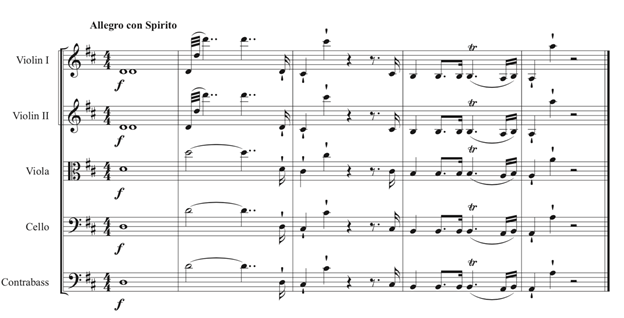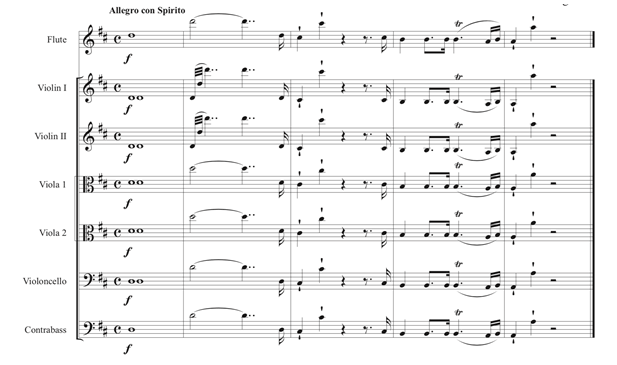Volume 15, June 2022
Different Strokes: Giambattista Cimador's chamber music arrangement of Mozart's Haffner (no. 35) and Paris (no. 31) Symphonies
by Mark Elliot Bergman
6. Double stops and other polyphonic string writing
Cimador's expertise as a string player informs other aspects of his approach. He frequently employs the use of octave and unison doubling to thicken the timbre of the ensemble. Mozart uses this technique more sparingly, such as in the opening of the Haffner Symphony. Here, the violins play two pitches, one with the open string and one fingered note on the lower string in unison with the open string. By contrast, Cimador extends this approach to the violas and cello part, using the open D string to articulate unison double stops.
Figure 5: String Parts for the opening of Mozart's Haffner Symphony. Note that the unison double stops are restricted to the violin parts.
Figure 6: Opening of Cimador's arrangement of the Haffner Symphony. Note the use of double stop octaves in the viola parts and the cello part.
Cimador finds many additional opportunities to employ this approach throughout the arrangement. Mozart uses unison and octave double stops only in the violin parts while Cimador extends this approach to the viola and cello part.
Figure 7: Cimador Edition, Movement 1, m. 59 – 66. Note the unison double stops on D and A.
Neither composer employs unison or octave doubling in the double bass part, although we know Cimador was familiar with octave doublings for this instrument since he previously used them in the solo part of the double bass concerto he composed (Heyes, 2015; Slatford & McClymonds, 2001).
Cimador's use of fuller chords in the string writing extends to the use of quadruple stops. Quadruple stops are not used in the source material at all.
Figure 8: Cimador edition, viola I part, Movement 1, m. 201 – 204. Note the use of quadruple stops.
|




